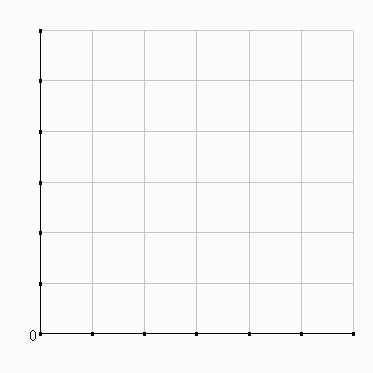| Example: %DPfor = 12% %DPdom = 4% Per PPP: Suppose: Nominal $ appreciation, but real $ depreciation. |
 |
|
Wednesday, April 11, 2012 |
IV. Stabilization policy
B.
Foreign exchange markets
2. Exchange
rate arrangements
Good graphical ER source:
FX plot interface
Tips:
(1) to get smoother trends for long periods, select "monthly"
frequency
(2) to express another country's ER as we do in class (value of its
currency), make the country you choose the "base currency," the US$ the
"target currency" and select "volume" notation
Examples for ER values
(1)
floating ERs:
US
(Dollar vs euro 1/1/99-): floating--appr, then depr
(2)
United
Kingdom (US and Euro)--App v. US$, depr v. Euro
(3)
fixed: China (1998-2004)
crawling peg, rising:
China
(2005+)
(4)
Thailand
(1993+)
(5)
Argentina
(1996+)
(6)
Turkey
(1995+): continuous inflation through 2001
3. Exchange rate determination
Particularly now that we're in a world of floating
ERs, questions arise concerning:
What makes ERs move around?
Why should we care?
ER changes might be neutral. Like neutral money, they
may have no effect on economic activity.
If they aren't neutral, they will have an effect on the level of
economic activity.
We want to know whether foreign exchange rate changes affect the level
of macro activity or not
Recall the 2 types of I/T:
(1) CA (commercial transactions in the popular press)
(2) KA (financial transactions in the popular press)
Individuals carrying out these 2 types of transactions in FX markets influence the level of ERs
The question is, which group of dealers dominates.
2 alternative theories match the 2 categories of I/T:
(1) Purchasing power (PP) approach focuses on CA transactions
(2) Asset market approach focuses on KA transactions
a. The purchasing power approach to ER changes
Purchasing power approach focuses on CA transactions as the decisive factor in ER determination.
(1) Theory: the purchasing power parity (PPP) condition
Context: We want to buy goods and services from each
other, and FX simply facilitates that process.
PPP => ERs change to preserve
stable real prices of goods and services
PPP is based on:
The law of one price: in terms of any currency, any
specific good must sell for the same price everywhere.
%DR = %DE + %DPdom - %DPfor
Result: PPP predicts: %DE = %DPfor - %DPdom
In words, PPP => the change in the nominal value of a country's currency over time matches the difference between foreign and domestic inflation rates.
High-inflation countries should have
depreciating currencies
Low-inflation countries should have appreciating currencies
Example: US v.
Turkey
| Example: %DPfor = 12% %DPdom = 4% Per PPP: Suppose: Nominal $ appreciation, but real $ depreciation. |
 |
Key implication of PPP:
PPP => ER neutrality
E may change but R is constant => international competitiveness
remains constant
Since inflation arises mainly from changes in the money supply, this
theory is also known as the monetary approach to ER
determination (Friedman, 1953, "The Case for Flexible Exchange
Rates").
If PPP is true: flexible exchange rates give countries monetary policy
autonomy: Different inflation rates are accommodated by offsetting exchange rate
adjustments
Inflation is completely neutral.
So PPP leads to specific predictions about R and E over time.
| ? With changes in E offsetting inflation differentials, how should R behave over time? |
 |
Example 1: Turkey
| 1980 | 2006 | $appr | |
| E (Lira per $) | 76.04 | 1,428,450 | 1,878,450.7% |
| Pus (US CPI) | 100 | 182.7 | |
| Ptrky (Turkey CPI) | 100 | 3,606,230.0 | |
| R | 76.04 | 72.37 | -4.8% |
PPP often works well to offset large inflation differentials
Example
2: US exchange rates
handout.
(data source: classes\ec311\realwrld\wrldecon.xls)
Note 1: PPP works well over the long run
Note 2: PPP does not work so well over shorter
time periods
Empirically, changes in nominal ERs have in general
meant parallel changes in real ERs.
Good news for Wall Street Journal: tracking E is a good proxy for
tracking R
Bad news for advocates of PPP: ER changes have real effects.
Bottom line: PPP
applies mainly for
(1) periods of hyperinflation and
(2) the long run (what
did Keynes say about the long run?)
So, what's wrong? Problems with PPP:
--Imperfect arbitrage for tradables (example: trade barriers)
--Many tradables are imperfect substitutes
--imperfect price
indexes (they include
nontradables)
Most important: --PPP overlooks
financial transactions.
PPP basically assumes that current account drives exchange rates.
Asset transactions have a big effect, especially in these days of high
capital mobility.
Friedman was more likely right back in 1953 when there was less
K-mobility, less well-developed financial markets, and policies in place to discourage
asset flows.
b. The asset market approach to ER changes
Poor performance of PPP => need another
explanation of ER changes.
The asset market approach is that other explanation. Now widely
accepted
Recall, PP approach to ERs => that ER changes
would be neutral.
E could change, but only to offset inflation differentials, so R would
be constant.
No changing R to disrupt the economy.
That's not what we have. When E moves, R typically moves right along with it.
Recall: PP approach focused on FX for financing
current account (goods and services) activities
The asset market approach
focuses on financial asset transactions.
Financial asset transactions are motivated by the rate of return that assets earn in different countries.
| Date: 4/7/2011 | Date: 4/11/2012 | ||
| Country | Annualized i-rate on 3-month gov't bonds | ||
| US | 0.04% | 0.08% | |
| Austrlia | 4.93% | 4.00% | |
| Brazil | 12.03% | 8.91% | |
| Britain | 0.61% | 0.37% | |
| Germany | 0.87% | 0.16% | |
| Japan | 0.12% | 0.11% | |
| Bloomberg |
|
||
? How can such i-rate differences exist at the same time?
Financial assets give us information about which currencies savers think are overvalued or undervalued relative to their long-run levels.